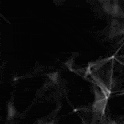Archive for the ‘dx’ Category
 New Book: Learning, Living, and Loving Morse Code…
New Book: Learning, Living, and Loving Morse Code…
There is a new book from a fellow Morse code amateur radio operator, Chris Rutkowski (NW6V), about “Learning, Living, and Loving Morse Code (in a Digital World).” NICE!
Title: “The CW Way of Life“
link: https://amzn.to/3Tm3KfD
Already, I think it rivals any other book on the topic, including “The Art and Skill of…,” or, “The Zen of…”
It is not, however, meant to replace, but to augment, what is available. But, it is a complete guide, including a “work book” section (nearly half of the book?) on how to improve your skill. Really good stuff, but I’m only in one day.
73 de NW7US dit dit
https://nw7us.us
..
 First Ever: Olivia Digital Mode on HF Weekend QSO Party
First Ever: Olivia Digital Mode on HF Weekend QSO Party
Announcement: Special Event Weekend, 02/11/2023
THE 1ST EVER OLIVIA DIGITAL MODE WEEKEND QSO PARTY
When is this special QSO party?
Valentine’s Day Weekend. This event is held this year on February 11, 1400 UTC, through February 13, 0200 UTC

First Ever Valentine’s Day Special QSO Weekend Event: The Olivia Digital Mode on HF
Join our mailing group for live interaction with other Olivia users:
http://OliviaDigitalMode.net
Sponsored by the Olivia Digital DXers Club (on Clublog, and on Facebook: Olivia Digital Mode on HF Radio (Contestia included))
Example frequencies:
Certificate for participants, and more. Organizer: Tomas Hood (NW7US), PO Box 110, Fayetteville, OH 45118.
This is the FIRST ever weekend QSO party for Olivia.
 What Headphones Do You Use, And Why?
What Headphones Do You Use, And Why?
What headphones do you use for your radio operation, and WHY do you use that particular make and model?
I use Audio-Technica ATH M30x professional monitor headphones (cans).
https://www.audio-technica.com/en-gb/ath-m30x
I use my rig’s filters to shape the audio.
1. I’ve replaced the over-the-ear pads with Gel pads. Wearing these cans is comfortable enough to use for extended periods of time (such as contests).
2. The mid-range with these cans is superior to other cans I’ve had.
3. They are rugged, so taking them out to the field isn’t a problem.
73 de NW7US dit dit
..
 Where’s My WAZ Certificate?
Where’s My WAZ Certificate?
Guess what! Today, I received (by postal service) this very nice plaque from CQ, for working and confirming all 40 of the worldwide CQ DX Zones.
Many of you wonder, “where are my paper certificates for my WAZ efforts?”
At least one, if not all of the following, are reasons why there has been such a long delay in getting paper certificates for the WAZ CQ program:
- Paper certificates (blanks) were not available and backordered (Covid, folks).
- There is only ONE person doing the lettering (by hand).
- The advent of FT8 and FT4 in the WAZ program has SWAMPED the program. There’s a HUGE backlog.
That said, the new CQ WAZ Manager (N4BAA, JOSE CASTILLO) has made the following statement available:
— quote follows —
Effective September 1, 2022, CQ Magazine will no longer provide the Hand Lettered CQ WAZ paper certificate for free.
CQ WAZ AWARD RECIPIENTS HAVE 4 AWARD OPTIONS:
- Accept the standard award offering which is a High-Definition PDF file. This file can be printed in color and framed and is very nice. This award is delivered immediately with award letter, thus, no waiting.
- Select the traditional CQ WAZ Hand-Lettered award: the cost is $19.00 and includes shipping worldwide. This award option is managed by CQ Magazine and can take up to 180 days to receive.
- Select a Level I plaque: 7” x 9” two-tone engraved wood plaque: cost is $57 US / $100 International and includes shipping. Delivery time is under 30 days for US stations and less than 60 days internationally.
- Select a Level II plaque: 9” x 12” Floating Etched Acrylic over Black Wood: cost is $91 US / $135 International. and includes shipping.
Here is a video that the administrator has posted, about this:
Delivery time is roughly 30 days for US stations and less than 60 days internationally depending on the actual address.
The intent of this program is to respond to the ever-increasing demand for more options that are still very personalized as well as very elegant.
Not every ham is able to achieve the requirements for a 5BWAZ or 160 Meter plaque, so he is making this offering to everyone!
All questions or inquiries and plaque orders should be directed to the CQ WAZ Manager via email at [email protected] or postal mail via QRZ.com address.
All plaque data will be taken directly from the information provided in your email. The CQ WAZ manager will not be responsible for errors in data supplied by the recipient other than AWARD type and Award number.
To Place Order: send the information below via email to [email protected] or via postal mail to my QRZ.com address and please double-check spelling etc.
Email Subject line should be: “WAZ PLAQUE ORDER – YOUR CALL”
Then, provide the following information:
Call Sign:
Desired Name on Plaque:
WAZ AWARD Type
(example: MIXED, RTTY, 15M CW, EME, etc.)
SERIAL NUMBER on award:
Date on Award:
Award Desired:
– Level 1 plaque – $57 US / $100 International
– Level 2 plaque – $91 US / $135 International
There you have it…
73 de NW7US dit dit
 Unexpected Surprise: What Are The Odds? ATNO DXCC
Unexpected Surprise: What Are The Odds? ATNO DXCC
I have a story for you. All of it is true, but I have not changed my name.
Wow! I am always amazed at those moments in my amateur radio hobby when spontaneous joy is had by unexpected events.
On Thursday, 14-April-2022, at about 17:30 Universal Time (UT), the unexpected occurred, and it started by accident.
I have been reorganizing my radio shack. Once I moved my main transceiver (the Icom IC-7610) from one desk to another, and had it back in operation, I left it tuned to a random frequency, in the CW mode. It was just sitting there, hissing away with the typical shortwave sounds of a frequency on which no one was transmitting. And me? I was going about reorganizing my radio shack.
After a while, I heard the start of a Morse-code CW signal; the operator was sending a CQ call–a transmission that invites a response from anyone who wishes to have a QSO with the calling station. What I heard was, “CQ CQ DE EP2ABS EP2ABS…”
NOTE: This transceiver, my Icom IC-7610, is listening with the new antenna—the 254-foot doublet up at 80 feet–that was raised up into the air here at my QTH by a fine crew from Hams in the Air.
I looked up EP2ABS on QRZ dot com, because I did not know from what country/entity the EP2 prefix on callsigns belongs. I was excited to see that EP2 is from Iran!
I started answering his CQ call, “DE NW7US NW7US,” for at least ten minutes; each time he sent his CQ, I answered. Finally, I heard him answering me, “NW7US NW7US DE EP2ABS 5NN…”
I answered back, sending my signal report, “5NN 5NN DE NW7US TU”
Soon after that simple exchange, he confirmed our QSO by posting our QSO to Logbook of the World (LotW).
Thus, by accident–as I had simply left the transceiver tuned to a randomly-selected frequency and stayed on that frequency listening while doing my chores–I heard the Iranian station calling CQ. What are the odds!?!?
This is my first QSO with Iran, another All Time New One (ATNO). How cool!
Note: This is a testimony to the work from the crew that did the fine work of getting this antenna installed. Here is a video presented by Hams on the Air:
73 de NW7US dit dit
 A pleasing Tuesday afternoon on the bands.
A pleasing Tuesday afternoon on the bands.
A little further down on 15m I heard 7X3WPL in Algeria. I checked out the call on QRZ.COM and this is a very active club called Sahara DX radio club. I gave them a call and I think they were not working split (can't remember) but there was a bit more of a pile-up. I decided to come back in a little while and see if things had calmed down. I came back about 5 minutes later and the log jam had cleared. I worked 7X3WPL and we exchanged signal reports.
I then came across another Algerian station 7X4AN he was calling CQ with no answers but he was just above the noise floor so I put the APF on (audio peak filter) and this helped out a great deal. I gave him a call and we did some repeats but contact was made and he was in the log. After my contact, he was spotted and the pileup began. It was good I got in when I did.
I also had CN8KD in Morocco booming in on 15m he was operating simplex and had a huge pileup. I did give it a go here and there but the number of stations calling him made it a waste of time for me to sit there and try. I moved on but he had a great signal at my QTH.
DX Heat was also showing 10m to be pretty active. Now up to this point, I have seen many spots for 10m and when I have always tuned there at my end it is just plain dead, no signals at all. This time there was a spot for 7Q6M in Malawi. To my surprise, he was there and with a signal of S7! He was operating split and I could hear some of the stations trying to contact him but not many. I did try a few times but no luck but just hearing some DX on 10m was a huge step!
Well, that was my afternoon on the radio. I was using my Icom 7610 at 100 watts into a multi-band End-Fed antenna about 30 feet off the ground. All contacts were CW with filter settings at 250 and now and then using the APF. Having the 2 independent receivers in the 7610 is a great help. I have VFO A in my left ear and VFO B in my right. When operating split it's a great help to hear both sides.
 A pleasing Tuesday afternoon on the bands.
A pleasing Tuesday afternoon on the bands.
The bands seem to be improving and it's a nice thing to see. Today I flipped the switch on in the early afternoon. I also loaded DX Heat a site that is my go-to as it lets me know what's going on in and around the bands. There were some nice dx spots on 15m and I thought I would spin the dial over to 15 meters in the CW section. The first station I tuned in was TZ4AM in Mali and Jeff was working split but with (that I could hear) not much of a pileup. I listened to his receive frequency (my calling frequency) to find out who he was working and how he was either moving up or down the frequency. I very soon got the hang of his operating and I called him and was in the log in no time. He gave me 569 and returned with 559 signal reports.
A little further down on 15m I heard 7X3WPL in Algeria. I checked out the call on QRZ.COM and this is a very active club called Sahara DX radio club. I gave them a call and I think they were not working split (can't remember) but there was a bit more of a pile-up. I decided to come back in a little while and see if things had calmed down. I came back about 5 minutes later and the log jam had cleared. I worked 7X3WPL and we exchanged signal reports.
I then came across another Algerian station 7X4AN he was calling CQ with no answers but he was just above the noise floor so I put the APF on (audio peak filter) and this helped out a great deal. I gave him a call and we did some repeats but contact was made and he was in the log. After my contact, he was spotted and the pileup began. It was good I got in when I did.
I also had CN8KD in Morocco booming in on 15m he was operating simplex and had a huge pileup. I did give it a go here and there but the number of stations calling him made it a waste of time for me to sit there and try. I moved on but he had a great signal at my QTH.
DX Heat was also showing 10m to be pretty active. Now up to this point, I have seen many spots for 10m and when I have always tuned there at my end it is just plain dead, no signals at all. This time there was a spot for 7Q6M in Malawi. To my surprise, he was there and with a signal of S7! He was operating split and I could hear some of the stations trying to contact him but not many. I did try a few times but no luck but just hearing some DX on 10m was a huge step!
Well, that was my afternoon on the radio. I was using my Icom 7610 at 100 watts into a multi-band End-Fed antenna about 30 feet off the ground. All contacts were CW with filter settings at 250 and now and then using the APF. Having the 2 independent receivers in the 7610 is a great help. I have VFO A in my left ear and VFO B in my right. When operating split it's a great help to hear both sides.


















